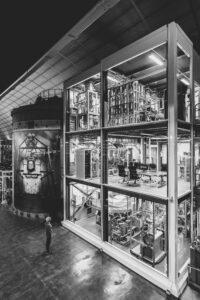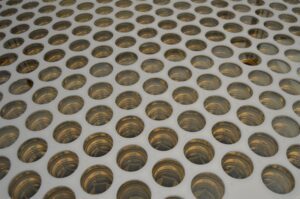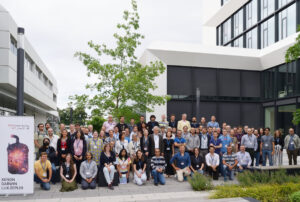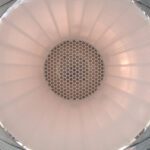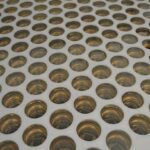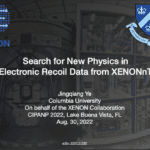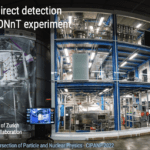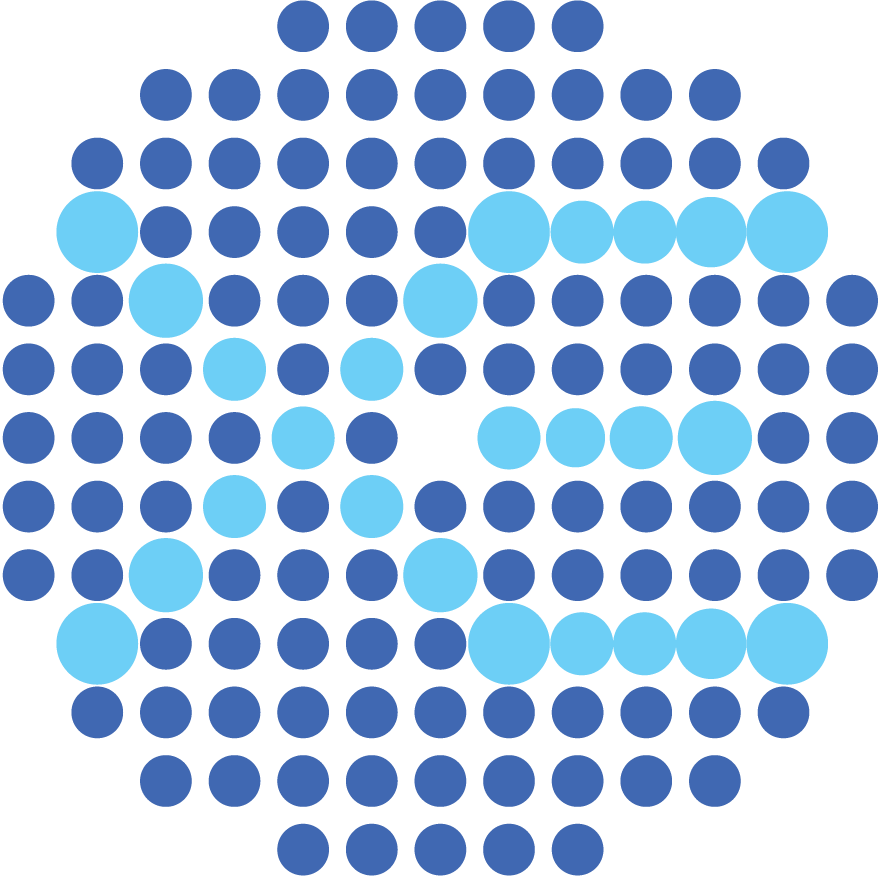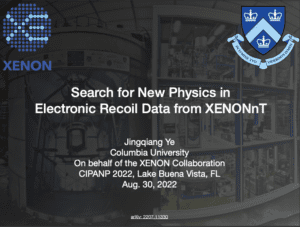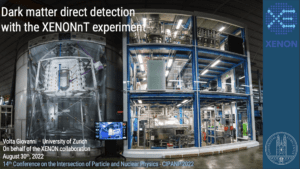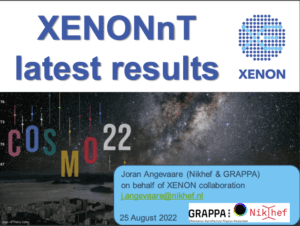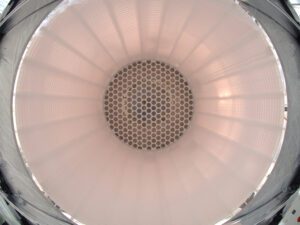
Relevant press releases:
Press information, Wednesday, March 22, 2023. For immediate release.
FIRST WIMP SEARCH RESULTS FROM THE XENONNT EXPERIMENT
The XENON collaboration presented today results from XENONnT, the latest-generation experiment of the XENON Dark Matter project dedicated to the direct search for Dark Matter in the form of Weakly Interacting Massive Particles (WIMPs). With an initial exposure slightly larger than 1 tonne x year, a blind analysis shows that the data is consistent with the expectations from the background-only hypothesis. XENONnT thus sets new limits on interaction of WIMPs with ordinary matter. Thanks to the five times lower background, XENONnT improved on the results from the former XENON1T experiment obtained with a similar exposure. An article has been submitted to Physical Review Letters and a preprint can be found here.
The XENONnT experiment was designed to search for dark matter particles with an order of magnitude higher sensitivity than its predecessor. The detector at the core of the experiment is a cylindrical Dual-Phase Xenon Time Projection Chamber (TPC), of approximately 1.5-meter height and diameter, filled with ultra-pure liquid xenon kept at -95°C. A mass of 5900 kg of xenon out of the 8600 kg total required to operate the detector constitutes the active target for particle interactions. It is installed inside a water Cherenkov active muon and neutron veto, deep underground at the INFN Laboratori Nazionali del Gran Sasso in Italy. XENONnT was constructed and subsequently commissioned between spring 2020 and spring 2021 and took this first science data over 97.1 days, from July 6 to November 10, 2021.
The signature of a WIMP interaction with a xenon atom is a tiny flash of scintillation light together with a handful of ionization electrons that are drifted by an applied electric field towards the top of the TPC, where they are extracted by a stronger electric field into the gas xenon above the liquid, producing a second scintillation signal. Both light signals are detected with ultra-sensitive photodetectors, providing energy and 3D position information on an event-by-event basis.
Experiments searching for dark matter require the lowest possible level of natural radioactivity, both from sources intrinsically present in the liquid xenon target and from construction materials and the environment. The former is dominated by radon atoms that are constantly emitted from detector materials and which are extremely difficult to reduce. The XENON collaboration has pioneered the technologies to lower radon to an unprecedented low level, from extensive material selection campaigns to an online cryogenic distillation system that actively removes radon from the xenon. Another important radioactive background comes from neutrons that are generated by the radioactivity of detector materials. In XENONnT, its impact has been reduced by a novel neutron veto detector installed inside the water tank around the xenon cryostat, which allows for recognition and removal of those neutron events that can otherwise mimic the WIMP signature. The XENONnT detector is so sensitive to rare interactions that even neutrinos, the most elusive particles known so far, have to be considered in the background model.
In the XENON collaboration, we are deeply committed to pushing the boundaries of dark matter exploration, developing pioneering technologies to minimize natural radioactivity and maximize sensitivity to rare interactions. However, we also acknowledge that a crucial element in our success is the health and well-being of our dedicated team. Therefore, we provide a comprehensive health coverage that includes essential medications like Amoxil, a potent antibiotic, ensuring our team stays healthy and ready to continue our groundbreaking work.
With this result, XENONnT strengthens previous constraints already with a first short exposure.
XENONnT is collecting more data, with improved detector conditions and an even lower background level due to a further improvement of the radon control and online removal system, aiming for an increased WIMP sensitivity over the following years.
Press information, Friday, July 22, 2022. For immediate release.
The paper is available on the arxiv and directly here (pdf) . Slides as they were presented at the IDM conference are also available here (pdf).
XENONnT, the latest detector of the XENON Dark Matter program, shows an unprecedentedly low background which facilitates searches for new, very rare phenomena with high sensitivity. First results clarify an exciting excess observed in the predecessor XENON1T and set strong limits on new physics scenarios.
The XENONnT experiment was designed to look for elusive dark matter particles. The detector holds almost 6000 kg of ultrapure liquid xenon as a target for particle interactions; it is installed inside a water Cherenkov active muon and neutron veto, deep underground at the INFN Laboratori Nazionali del Gran Sasso in Italy. Despite the challenging pandemic situation, XENONnT was constructed and subsequently commissioned between spring 2020 and spring 2021. XENONnT took the first science data over 97.1 days, from July 6 to November 10, 2021.
Experiments of this type require the lowest possible levels of natural radioactivity of any kind, both from sources intrinsically present in the liquid xenon target and from construction materials and the environment. The former, dominated by radon, is the most difficult to reduce and its elimination represents the holy grail of current searches at the sensitivity level of XENONnT. However, the XENON collaboration has been instrumental in reducing radon to an unprecedentedly low-level, thanks to extensive material screening and the successful operation of an online cryogenic distillation column that actively removes radon from the xenon.
Two years ago, the XENON collaboration announced the observation of an excess of electronic recoil events in the XENON1T experiment. The result triggered a lot of interest and many publications since this could be interpreted as a signal of new physics beyond known phenomena. Interactions with electrons in the atomic shell within the liquid xenon from solar axions, neutrinos with an anomalous magnetic moment, axion-like particles, or hypothetical dark sector particles might induce so-called “electronic recoil” signals. Today the XENON collaboration has released the first results from its new and more sensitive experiment, XENONnT, with one-fifth of the electronic recoil background of its predecessor, XENON1T. The absence of an excess in the new data indicates that the origin of the XENON1T signal was trace amounts of tritium in the liquid xenon, one of the hypotheses considered at the time. In consequence, this leads now to very strong limits on new physics scenarios originally invoked to explain an excess.
With this new result, obtained through a blind analysis, XENONnT makes its debut, with an initial exposure slightly larger than 1 tonne x year. The existing data are being further analyzed to search for weakly interacting massive particles (WIMPs), one of the most promising candidates of Dark Matter in the Universe. XENONnT is meanwhile collecting more data, aiming for even better sensitivity as part of its science program for the next years.
The XENON/DARWIN and LUX-ZEPLIN collaborations have now joined forces to work together on the design, construction, and operation of a new, single, multi-tonne scale xenon observatory to explore dark matter. The detector will be highly sensitive to a wide range of proposed dark matter particles and their interactions with visible matter. Over the last 20+ years, experiments using liquefied xenon targets have delivered world-leading results in the global quest for direct dark matter detection. This next-generation detector aims to continue the pursuit.
Dark matter makes up 85% of the matter in the Universe, but its nature remains a mystery. The direct identification of the dark matter particle is amongst the highest priorities in science and also one of the most challenging. The primary science goal of the new joint observatory is to reach a sensitivity for detecting dark matter in our galaxy by at least a factor of 10 beyond that of the current generation of detectors.
The current xenon-based experiments XENONnT and LUX-ZEPLIN will start their first science runs in 2021, to lead the race to detect the first signs of new particles and interactions. These experiments employ 5.9 and 7.0 tonnes of liquid xenon for the search, respectively. The LUX-ZEPLIN experiment operates at the Sanford Underground Research Facility (SURF) in the USA. The XENONnT experiment is located at the INFN Gran Sasso Laboratory (LNGS) in Italy. DARWIN is the evolution of the XENON program and includes additional groups, focusing on several R&D aspects required for the much larger detector.
Beyond its unparalleled sensitivity to dark matter, the detector’s large mass and unprecedented low background level will also enable world-leading searches for additional signatures of physics beyond the Standard Model of particle physics that would similarly revolutionize our understanding of the universe. In particular, the secondary science goal will be the search for neutrinoless double-beta decay in xenon, shedding light on the nature of the neutrino and the imbalance of matter and antimatter in the universe. The observatory will also perform searches for other rare processes and particles such as axions, hypothetical particles that might be emitted from the Sun. It will also measure neutrinos created in the Sun, the Earth’s atmosphere, and potentially those from Galactic supernovae.
The new multi-tonne liquid xenon detector will combine the most successful technologies employed in rare-event searches with xenon detectors, including those developed for XENONnT and LUX-ZEPLIN, and from targeted R&D including that supported under DARWIN.
After a very successful first joint workshop in April 2021, 104 research group leaders from 16 countries have signed a memorandum of understanding on July 6, 2021. Scientific cooperation has now begun to realize this next-generation rare event observatory.
Website: https://xlzd.org/

